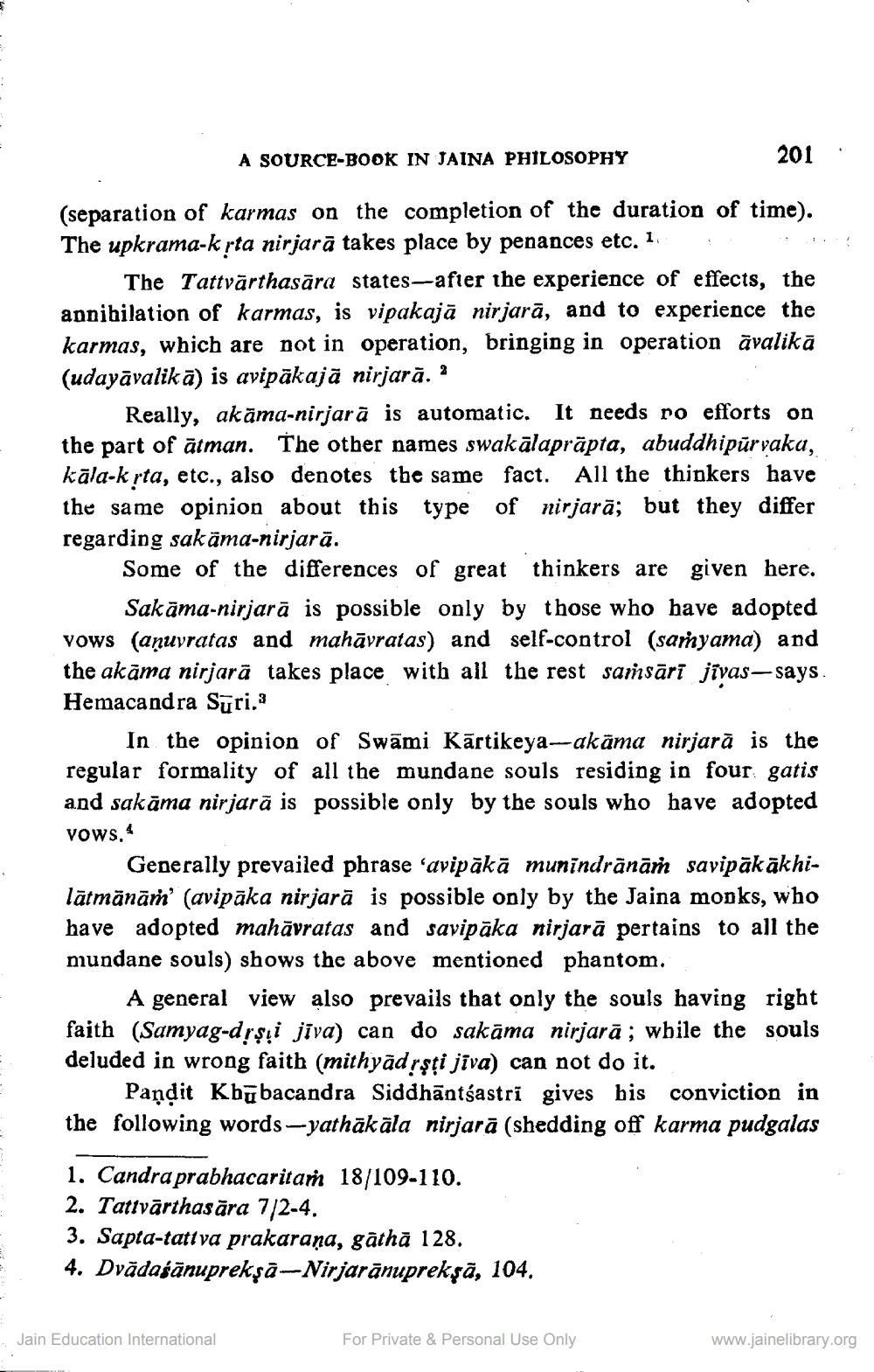________________
*
A SOURCE-BOOK IN JAINA PHILOSOPHY
(separation of karmas on the completion of the duration of time). The upkrama-kṛta nirjarā takes place by penances etc. 1
The Tattvärthasara states-after the experience of effects, the annihilation of karmas, is vipakajā nirjarā, and to experience the karmas, which are not in operation, bringing in operation avalikā (udayāvalik ā) is avipākajā nirjarā. "
201
Really, akama-nirjarā is automatic. It needs ro efforts on the part of ātman. The other names swakālaprāpta, abuddhipūrvaka, kāla-k ṛta, etc., also denotes the same fact. All the thinkers have the same opinion about this type of nirjarā; but they differ regarding sakäma-nirjarā.
Some of the differences of great thinkers are given here.
Sakāma-nirjarā is possible only by those who have adopted vows (aṇuvratas and mahāvratas) and self-control (samyama) and the akāma nirjarā takes place with all the rest samsārī jīvas-says Hemacandra Suri.3
In the opinion of Swami Kārtikeya-akāma nirjarā is the regular formality of all the mundane souls residing in four gatis and sakāma nirjarā is possible only by the souls who have adopted Vows.4
Generally prevailed phrase 'avipākā munīndrānāṁ savipākākhilātmānāṁ' (avipāka nirjarā is possible only by the Jaina monks, who have adopted mahāvratas and savipāka nirjarā pertains to all the mundane souls) shows the above mentioned phantom.
A general view also prevails that only the souls having right faith (Samyag-dṛṣți jīva) can do sakāma nirjarā; while the souls deluded in wrong faith (mithyadṛṣṭi jiva) can not do it.
Pandit Kbu bacandra Siddhantśastrī gives his conviction in the following words-yathākāla nirjarā (shedding off karma pudgalas
1. Candra prabhacaritam 18/109-110.
2. Tattvärthas āra 7/2-4.
3. Sapta-tativa prakaraṇa, gāthā 128.
4. Dvādaśānuprekṣā-Nirjarānuprekṣā, 104.
Jain Education International
For Private & Personal Use Only
www.jainelibrary.org




